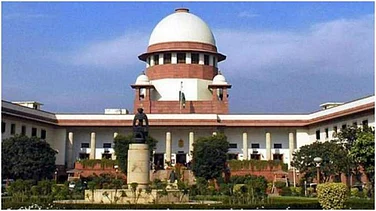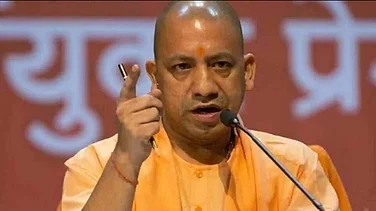New Delhi, the modern grand capital of India with the Raisina Hill complex at its heart, whose foundation stones were laid by King George V and Queen Mary over a century ago, was inaugurated on this day in 1931 by Viceroy Lord Irwin.
The inauguration ceremony was spread over a week, during which then Viceroy also dedicated the All-India War Memorial Arch, now known as India Gate, on February 12 that year in memory of the soldiers who died in the First World War (1914-1918) and the Third Anglo-Afghan War (1919). The landmark has the names of soldiers inscribed on its surface.
The new imperial city was born on December 12, 1911, during a grand ceremonial 'Durbar' here when British monarch King George V had announced the shifting of the capital from Calcutta to Delhi.
Three days later, a simple ceremony was held at the Government of India Camp where King George and Queen Mary had laid two foundation stones of the new capital city in succession. The stone blocks did not carry anything, but a simple inscription of "15th December 1911", according to archival records.
After laying of the foundation stones, the King-Emperor, said: "It is my desire that the planning and designing of the public buildings to be erected should be considered with the greatest deliberation and care, so that the new creation may be in every way worthy of this ancient and beautiful city."
In consonance with the vision of the king, architects Sir Edwin Lutyens and Sir Herbert Baker built the new capital city of the British Raj, whose grandeur and architectural splendour rivalled the best of the cities in Europe and America.
The centrepiece of this new capital was the Raisina Hill complex, housing the majestic Viceroy's House (now Rashtrapati Bhavan) and North Block and South Block.
The city, constructed between the two World Wars and which took over 20 years to build, was inaugurated on February 13, 1931 by the then Viceroy Lord Irwin.
On the day of the inauguration, four iconic Dominion Columns, each made of red sandstone and topped by replica of a ship, were unveiled by Lord Irwin amid fanfare of trumpets followed by the playing of the (British) national anthem, according to the book 'Glittering Decades: New Delhi in Love and War'.
"The four columns which are the immediate purpose of our meeting today are tokens of something wider than anything which the past cities of Delhi represent,” says the book, quoting the Viceroy's speech at the unveiling.
The columns, each a gift from Australia, New Zealand, South Africa and Canada, marked a gesture of friendship and unity within the British Empire.
The official Twitter handle of Delhi Archives, went down memory lane, and also recalled the historic inauguration of 'New Delhi'.
"#TodayinHistory | The Viceroy of India, Lord Irwin, inaugurated New Delhi as India's new capital on this day in 1931," Delhi Archives tweeted.
It also shared an archival aerial photograph of the then newly-built Secretariat buildings and Parliament House.
The foundation stone of the Parliament House -- an architectural marvel in stone, designed by Baker that is now revered as the country's seat of democracy, was laid 101 years ago on February 12, 1921, by the then Duke of Connaught, who had said that this landmark will stand for future generations as the "symbol of India's rebirth to yet higher destinies".
The circular-shaped elegant Parliament House building, originally called the 'Council House', was inaugurated on January 18, 1927 by Viceroy Irwin amid much fanfare.
The new imperial city, incidentally, was christened 'New Delhi' on December 31, 1926, by King George V, just a few years before its official inauguration.
"The meaning of imperial Delhi reached both its fullest expression as well as its fullest contradiction in February 1931, when the new capital was opened to the world in an inauguration that lasted a week,” D Johnson and Richard Watson say in the book 'New Delhi: The Last Imperial City'.
The ceremony was held at the Raisina Hill, with the Viceroy's House, and North Block and South Block witnessing opulent functions to mark the occasion.
The legacy of building of New Delhi has been brought into sharp focus with the ongoing Central Vista redevelopment project and recently with Prime Minister Narendra Modi announcing ahead of the 125th birth anniversary of freedom fighter Subhas Chandra Bose that a grand statue of Netaji will be installed in the empty canopy facing India Gate, drawing mixed reaction from urban planners, historians and other citizens.
The majestic canopy was built as a memorial to King George V after his death in 1936 and housed his iconic statue, which was removed in 1968. It was unveiled by the then Viceroy of India Lord Linlithgow on November 14, 1939.


























